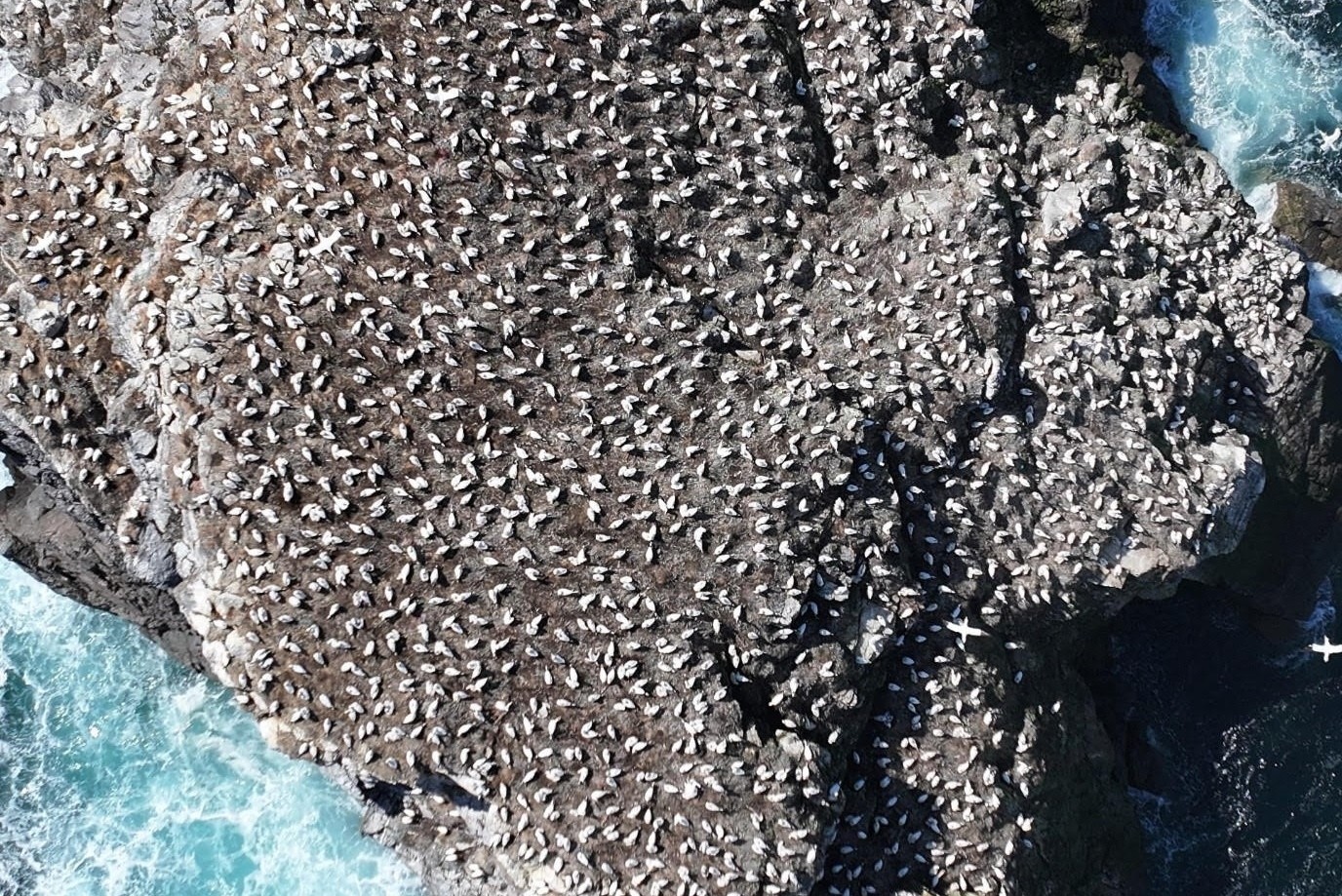BIRD colonies in the Channel Islands which were devastated by avian flu have become some of the first in the world to be surveyed by drones and counted by cutting-edge AI technology.
Wildlife experts in Alderney are assessing the cost of the disease at the “gannetries” of Ortac and Les Etac, rocky outcrops off the island, and estimate it has reduced gannet numbers there by almost a third – or roughly back to the level recorded in the 1980s.
The colonies are globally important and contain over 1% of the world’s northern gannet population during nesting season.
Highly Pathogenic Avian Influenza, commonly known as avian flu, wreaked havoc on seabird populations across the British Isles in 2022.
The Alderney Wildlife Trust has used manned aircraft censuses to estimate the dramatic population decline.
But the trust said “understanding how long it will take the populations to recover requires more regular monitoring than manned aircraft censuses allow”, prompting them to explore more “innovative” options.
This year, researchers from the Seabird Watch Project conducted a “drone-assisted census”, a method described as both “more cost-effective and less logistically constrained” than flying an aircraft.
The trust said there had to be strict adherence to local and international guidelines after receiving permission to fly the drones from air traffic control and approval from authorities in the Bailiwick.
Dr Tara Cox, an ecologist with the trust, said: “We are thrilled to have the opportunity to update Alderney’s monitoring methods and contribute to international research efforts. This innovative approach allows us to gather finer spatial and temporal data on Alderney’s gannet populations in a cost-effective and non-invasive manner.
“We are incredibly grateful to the States of Alderney, States of Guernsey Vet, as well as Guernsey and Alderney Air Traffic Control for their support in facilitating this project.”
The final census results for both sites are due to be published in the upcoming Alderney Ramsar Annual Review.






